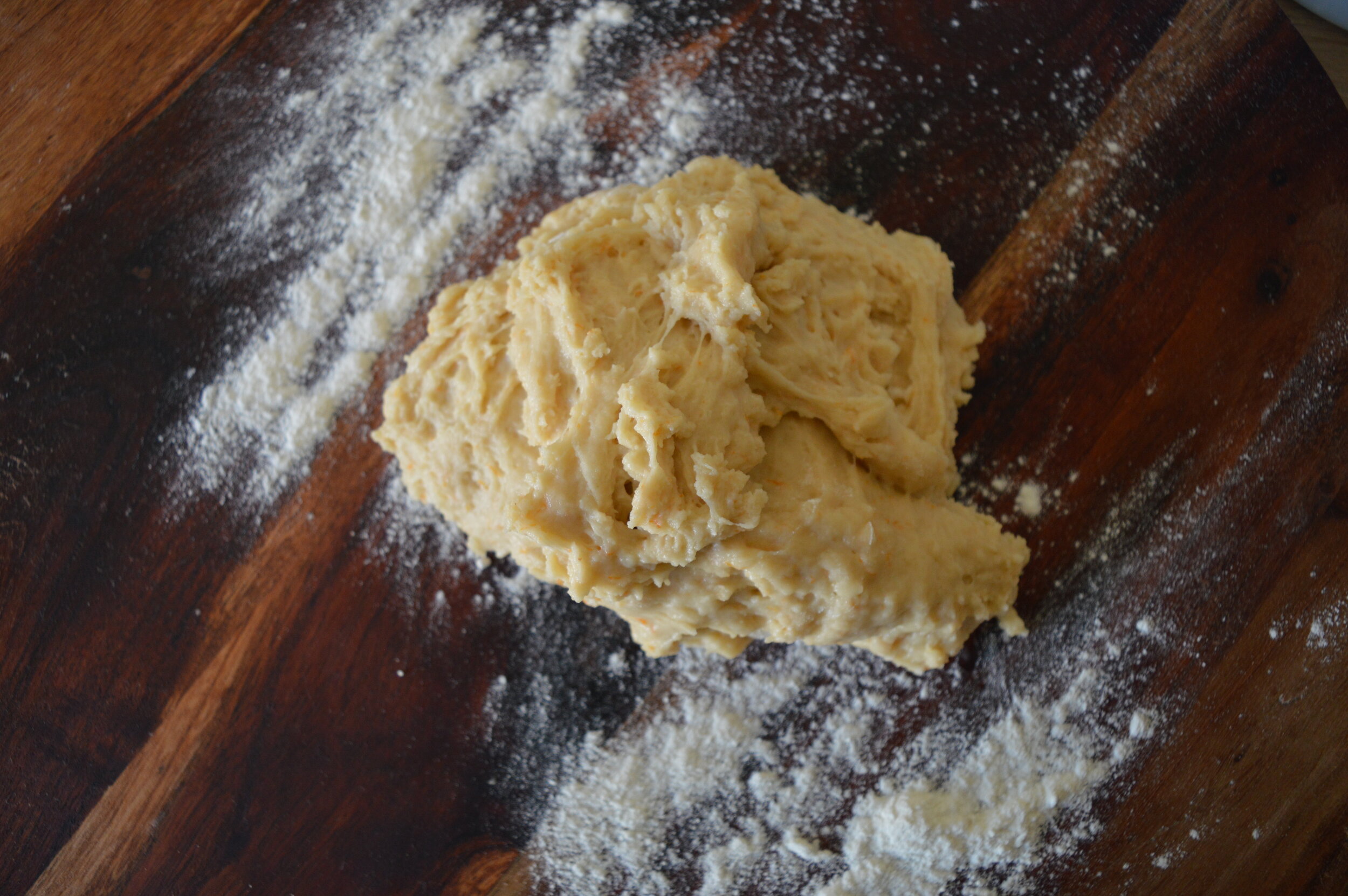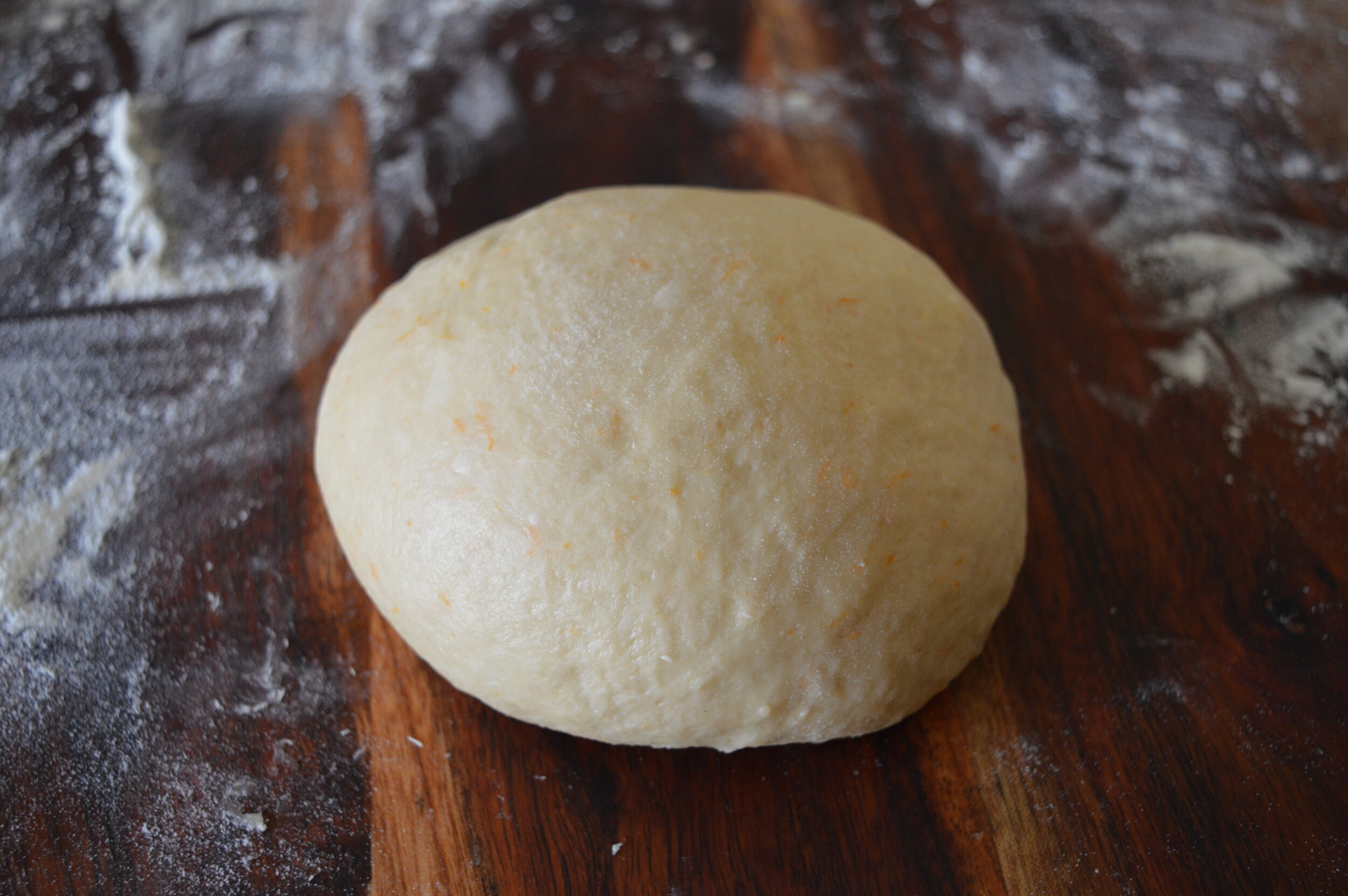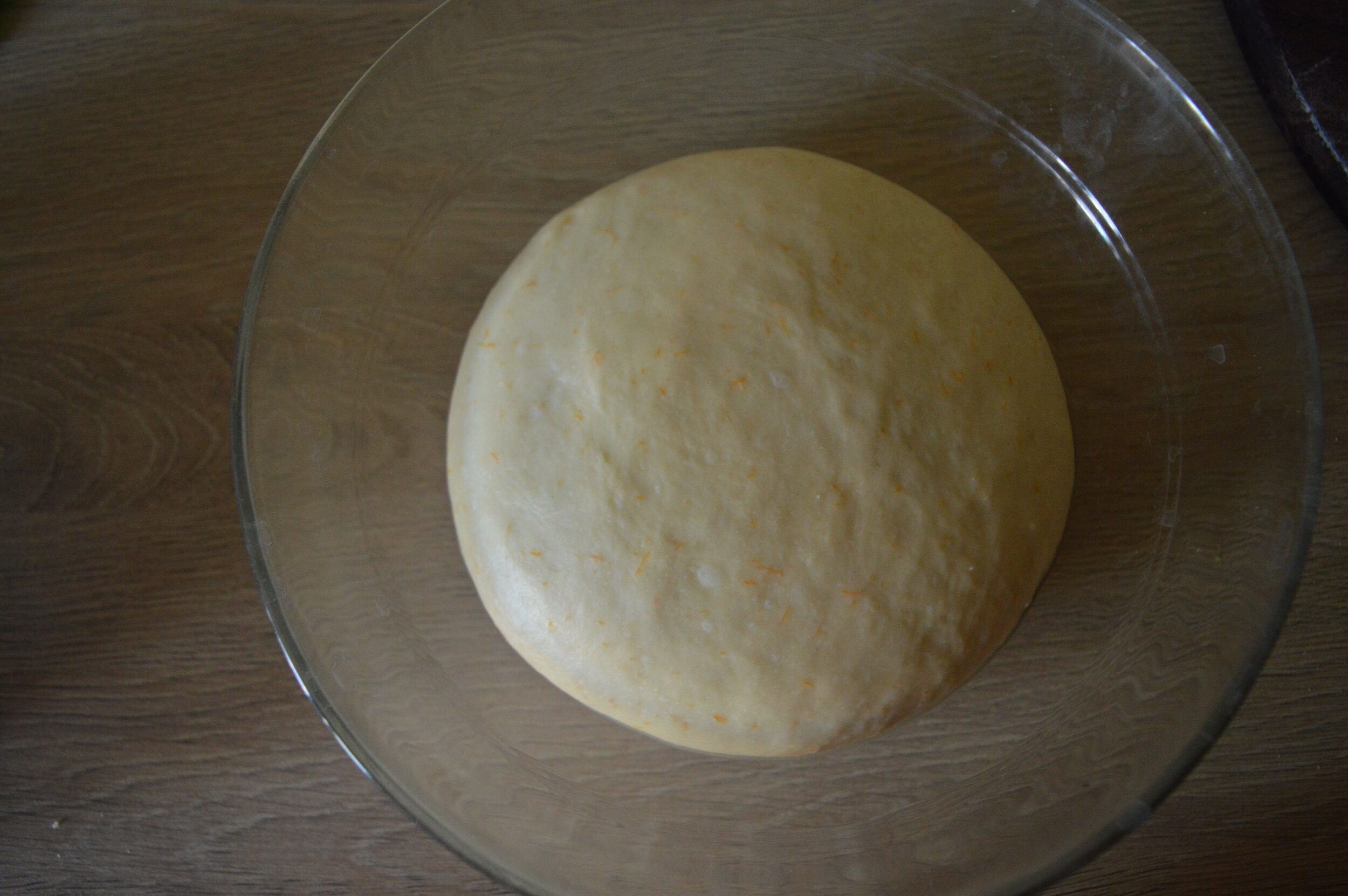Maritozzi
While most people can characterize periods of their life with “Where they were living”, or “Who they were dating,” or “Where they were working”, I find that I can do the same with breakfast (colazione in Italian, in case you were wondering). Let me explain: the elementary to high school years were characterized by things my mom prepared for us before we all ran to catch the school bus, buttered cinnamon toast or pancakes if we all woke up early enough; there were the college years, where breakfast was usually whatever looked most edible in the college dining hall, or oatmeal made in our dorm microwave; my time in Italy, where breakfast was a cappuccino with a newly discovered brioche (Bologna) or cornetto (Rome), Italy's answer to the croissant; and then, just when I thought I knew all I had to know about the most important meal of the day, a new chapter began: that of the Maritozzo.
The maritozzo is a classic Roman pastry, a sweet bun split and filled with whipped cream. During my early years in the Eternal City I'd spot them occasionally at bars and bakeries, but (naively! stupidly!) dismissed them, figuring that they were more dessert than breakfast and a pastry not so easily dipped into a cappuccino like my usual cornetto. Upon learning that my neighborhood bar was out of my usual order one morning — a cornetto integrale, for the record — I found myself opting for the cream filled pastry I’d seen around, and thus finally (!!!) and somewhat accidentally got around to sampling a maritozzo. It turns out the pastry I’d been passing over all those months was jaw-droppingly delicious, pure bliss, a complete breakfast game changer for me, my new favorite pastry (the cornetto seemed suddenly so humble, so plain!) It wasn't at all heavy, as I’d assumed — a featherlight bun and unsweetened cream — and was so delicious on its own that dipping it in coffee would've been utterly unnecessary. It was, in short, love at first bite, and the beginning of a new breakfast era.
So! I imagine at this point you’re intrigued, or maybe even a little jealous — you’re wishing you had a maritozzo for breakfast too, right? Perhaps you’re reading this as you take the next bite of your routine yogurt or cornflakes? If you can’t get to Rome for one of these stellar pastries, or even if you’re just looking to recreate one you’ve tried here in the capital, or even if you just want to bake a special breakfast treat for the holidays, a little pick-me-up in a tough year — I am please to inform you that you can make your own Roman maritozzi at home.
This recipe comes from fellow expat, chef, cookbook author, and overall lovely and talented person, Letitia Clark (you may remember her from this post here on almond cherry panna cotta!) Like all Letitia-recipes I’ve made, this one was excellent, spot-on, perfect — here we’ve got maritozzi that are airy and light and orange scented, split down the middle and filled with the telltale billow of freshly whipped cream. The golden brown bun contrasts splendidly with the snowy whipped cream, and when dusted with a little powdered sugar — gilding the lily, I know — they are extra festive and beautiful. A note here: these are incredibly easy to make -- don't let the fact that it is a yeast bread scare you -- just a matter of a little mixing, kneading, and rising. During the rise time, you can do whatever other chores or last minute holiday tasks you need to get done (in my case: the annual wrapping of Christmas gifts with the finesse and skill of a five year-old).
Wondering where that weird name comes, from, by the way? “Maritozzo” comes from the word marito, which means "husband" in Italian. Legend has it that way back in the day, Italian men offered these treats to their fiancees on the first of March, or what we now celebrate as Valentine's Day. These guys were geniuses, clearly, because anyone who comes bearing a box of maritozzi instead of a bouquet of roses is good in my book. Try these and I think you'll agree.
A couple of notes: I have made these both with dry yeast and fresh yeast with good results — I have provided the quantities for both below. When baking these, I suggest use a kitchen scale to be as precise as possible, though I have provided cup/tablespoon measurements below. If you want to make just six and not twelve, this recipe halves well — just mix together the egg and egg yolk (the part that is tricky to halve!) and measure it with your scale, then just use half the measured quantity. Save the rest for your egg wash. The bun sometimes but not always includes things like raisins, pine nuts, or even candied orange -- here I chose to include just orange zest but add or take away ingredients as you wish. The buns are delicious filled with cream but also very good spread with jam or Nutella, I found. Finally, these freeze very well — I froze some of them the day I baked them, then a few days later let them thaw overnight in the fridge, and found that they’re still as fluffy as the day you made them. Win win!
Want more recipes from Letitia? You can order her cookbook (Bitter Honey - Recipes from Sardinia) here!
For more Roman recipes, click here.
Looking for more recipes for foods that you thought you could only eat when in Italy? Click here!
MARITOZZI
Recipe from Letitia Clark. Makes 12 maritozzi.
Ingredients for the sponge:
4 grams dry yeast (about 1 1/4 teaspoons) or 10 grams fresh yeast
1 tablespoon honey
150 grams (1/2 cup + 2 tablespoons) whole milk
60 grams (a little less than 1/2 cup; about 7 tablespoons) flour
Ingredients for the dough:
400 grams (around 3 cups) bread flour
200 grams (1 1/2 cups) all-purpose flour
10 grams (1 1/2 teaspoons) salt
70 grams (5 tablespoons) light olive/seed oil
Zest of 1 orange
100 grams (1/2 cup) sugar
100 grams (6.5 tablespoons) water
1 egg + 1 egg yolk
Beaten egg, for egg wash
To fill the maritozzi:
300 mL (1 1/4 cups) heavy cream
2 tablespoons powdered sugar (icing sugar)
Directions:
For the sponge: Warm the milk in a small saucepan or microwave and then set it aside until it is tepid. Mix the yeast, honey, and flour with the warm milk in a small bowl and whisk until you have a smooth mixture. Cover with clingfilm and set aside and leave for 30 minutes. You should se lots of tiny bubbles forming.
For the dough: Place both flours in a large bowl and add the salt. In a separate bowl mix the sugar, whole egg and eg gyolk, oil, orange zest, and water. Whisk to combine.
Once 30 minutes are up and the leaven is nice and bubbly, add it to the oil and egg mix, then mix the liquids into the flour, bringing everything together — you can use your standing mixer for this, if you have one. Remove the resulting dough from the bowl and lead it on a lightly oiled surface (again: the Kitchen aid can be used here). Knead the dough for a few minutes until you have a smooth dough — the dough is a bit sticky, so use a bread scraper to help you knead and scrape up any bits from that stick to the surface if you’re doing this by hand.
Place the dough in a lightly oiled bowl and cover with a clean dishtowel. Leave it to rise in a warm place until doubled in size, about 90 minutes.
Scrape the dough out of the bowl and using a knife or dough cutter, divide it into 80 gram pieces using your scale (you can also eye ball this, but it is useful to have the buns all the same size when baking). Shape each piece into a neat round and then place them on a lined baking tray a few inches apart. Cover again lightly with plastic wrap or aluminum, and let them rise again for 90 minutes.
Preheat the oven to 190 degrees Celsius (375 degrees Fahrenheit). Once the buns have doubled in size and the 90 minutes are up, brush them with egg wash. Place them in the oven and cook until they are golden brown and puffy, about 12-15 minutes. Let cool.
For the filling: Whip the cream to soft peaks and fold in the powdered sugar. Allow the buns to cool before cutting a deep slit down the middle, and fill abundantly with whipped cream. Dust them with a little powdered sugar if you want them to be extra pretty. Eat with gusto.



